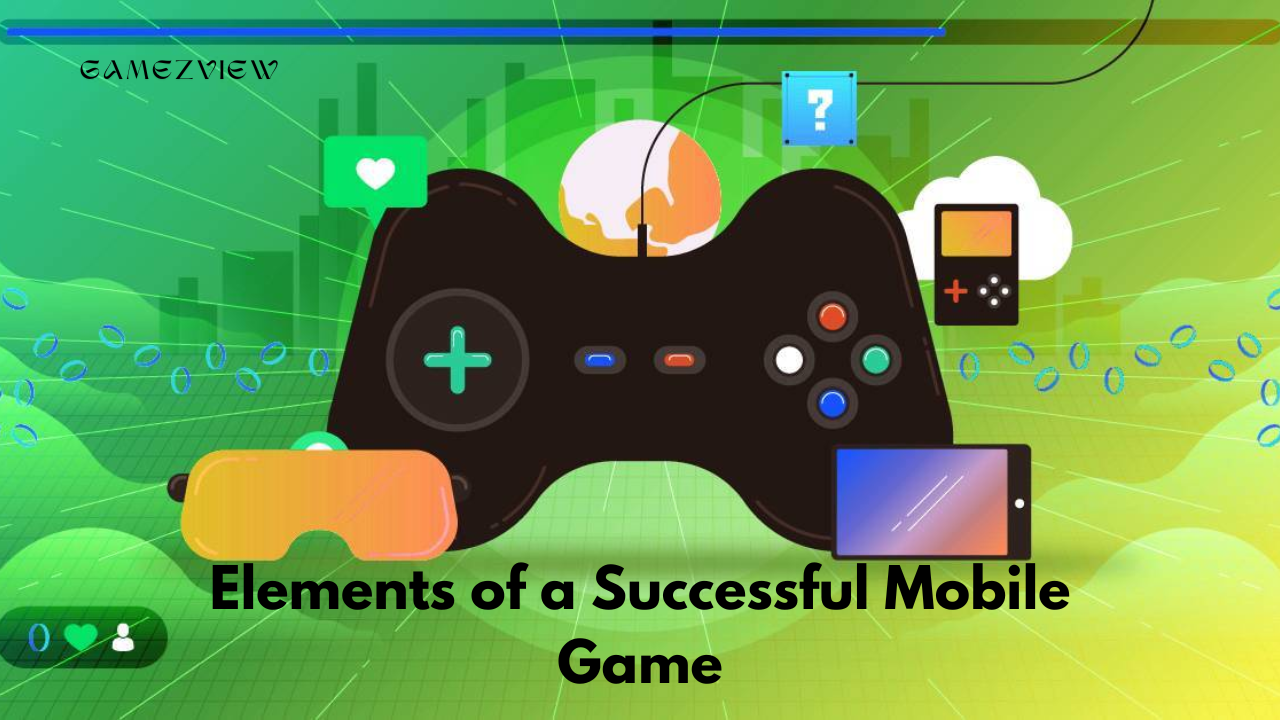The mobile gaming industry has experienced exponential growth over the past decade, transforming from a niche market into a dominant force in entertainment. With millions of games available across various platforms, creating a successful mobile game requires a keen understanding of several crucial elements. These elements include graphics, gameplay, user experience, monetization, and more. This comprehensive guide will explore each of these components in detail to help developers craft a game that stands out in the crowded mobile gaming landscape.
1. Graphics: Creating a Visual Appeal
1.1. Art Style
The art style of a mobile game is one of the first things players notice. Whether it’s 2D-pixel art, 3D realism, or a whimsical cartoon aesthetic, the art style should align with the game’s theme and appeal to its target audience. A cohesive art style enhances the game’s identity and sets it apart from competitors.
Creating Engaging and Addictive Mobile Games: A Comprehensive Guide
- Consistency: Ensure that the art style is consistent across all elements of the game, including characters, environments, and user interface elements. Consistency helps in creating a unified and immersive experience.
- Optimization: Mobile devices come with varying levels of hardware capabilities. Optimize graphics to ensure smooth performance across different devices. High-resolution textures and complex models should be used judiciously to avoid performance issues.
1.2. Visual Effects
Visual effects play a crucial role in enhancing the overall experience. They can make the game more engaging and visually stimulating. Effective use of visual effects includes:
- Particles and Animations: Implement particle effects for explosions, magic spells, or environmental changes. Smooth animations and dynamic effects contribute to the game’s appeal.
- Feedback and Rewards: Use visual effects to provide feedback for player actions, such as achievements or level completions. This reinforces positive behaviour and keeps players motivated.
1.3. User Interface (UI) Design
The UI design of a mobile game should be intuitive and aesthetically pleasing. Elements such as buttons, menus, and icons should be designed with clarity in mind.
- Clarity: Ensure that all UI elements are easy to read and understand. Avoid cluttering the screen with too many options or complex menus.
- Responsiveness: The UI should be responsive to different screen sizes and orientations. Test the UI on various devices to ensure a consistent experience.

2. Gameplay: Crafting an Engaging Experience
2.1. Core Mechanics
The core mechanics of a game define how players interact with it. These mechanics should be well-designed and engaging.
- Simplicity: Mobile games often benefit from simple, easy-to-understand mechanics. Players should be able to pick up the game quickly without a steep learning curve.
- Depth: While simplicity is important, the game should also offer depth to keep players engaged over time. Incorporate various challenges, levels, or modes to maintain interest.
2.2. Controls
Mobile games rely on touch controls, which can be both an advantage and a challenge. Designing intuitive controls is essential for a seamless experience.
- Ease of Use: Controls should be easy to use and responsive. Avoid complex gestures that might be difficult for players to execute accurately.
- Customization: Allow players to customize controls if possible. This can enhance comfort and accessibility, catering to different play styles.
2.3. Progression and Rewards
Progression and rewards are key motivators for players. A well-structured progression system encourages players to keep playing and advancing.
- Levels and Challenges: Implement a progression system with levels, achievements, or challenges. Gradually increase the difficulty of keeping players engaged.
- Rewards: Provide rewards for milestones or achievements. These can include in-game currency, new levels, or special items. Rewards should be meaningful and enhance the player’s experience.
2.4. Balance and Fairness
Balancing the game is crucial for maintaining fairness and preventing frustration.
- Difficulty Curve: Ensure a gradual difficulty curve that allows players to improve their skills over time. Sudden spikes in difficulty can lead to frustration and disengagement.
- Monetization Impact: If your game includes in-app purchases, ensure that they do not create an unfair advantage for paying players. Maintain a balance between free and premium content.
3. User Experience: Ensuring a Smooth Interaction
3.1. Performance and Optimization
Performance issues can quickly turn players away from your game. Optimize your game to ensure smooth performance on a variety of devices.
- Loading Times: Minimize loading times by optimizing assets and using efficient coding practices. Long-loading screens can lead to player frustration.
- Frame Rate: Aim for a consistent frame rate to provide a smooth experience. Test your game on different devices to ensure performance is consistent.
3.2. User Onboarding
Effective onboarding helps new players understand how to play the game and get started quickly.
- Tutorials: Implement clear and concise tutorials that guide players through the basics. Avoid overwhelming new players with too much information at once.
- Contextual Hints: Provide contextual hints or tips as players progress. This can help them understand game mechanics and features without disrupting the experience.
3.3. Feedback and Support
Provide channels for players to give feedback and seek support. This helps build a positive relationship with your player base.
- Feedback Mechanisms: Include options for players to provide feedback or report issues. This can be through in-game forms or external platforms.
- Support: Offer support options, such as FAQs or customer service, to assist players with any issues they encounter.

4. Monetization: Balancing Revenue and Player Experience
4.1. In-App Purchases
In-app purchases (IAPs) are a common monetization strategy for mobile games. They should be designed to enhance the player experience rather than hinder it.
- Cosmetic vs. Functional: Consider offering cosmetic items, such as skins or customization options, that do not affect gameplay balance. This can generate revenue without creating a pay-to-win scenario.
- Value for Money: Ensure that in-app purchases provide value for money. Players should feel that they are getting something worthwhile for their investment.
4.2. Ads
Integrating ads can provide additional revenue but should be done in a way that does not disrupt the gameplay experience.
- Ad Placement: Place ads in non-intrusive locations, such as between levels or as optional rewards. Avoid ads that interrupt gameplay or cause frustration.
- Frequency: Control the frequency of ads to prevent them from becoming overwhelming. Balancing ad exposure with gameplay is key to maintaining player satisfaction.
4.3. Subscription Models
Subscription models offer a steady revenue stream and can provide players with additional benefits.
- Exclusive Content: Offer exclusive content or features to subscribers. This can include early access to new levels, special items, or an ad-free experience.
- Trial Periods: Provide trial periods for subscriptions to allow players to experience the benefits before committing.
The Importance of User Retention and Engagement in the Mobile Gaming Industry
5. Marketing and Community Engagement
5.1. Marketing Strategies
Effective marketing is crucial for the success of a mobile game. Implement strategies to increase visibility and attract players.
- App Store Optimization (ASO): Optimize your game’s listing on app stores with relevant keywords, compelling descriptions, and engaging visuals. This helps improve visibility and attract potential players.
- Social Media: Utilize social media platforms to promote your game and engage with players. Share updates, and behind-the-scenes content, and interact with your community.
5.2. Community Building
Building a strong community around your game can drive long-term success and player retention.
- Forums and Social Media Groups: Create forums or social media groups where players can discuss the game, share tips, and connect with others. This fosters a sense of community and loyalty.
- Events and Updates: Organize in-game events or regular updates to keep the community engaged. This can include special challenges, new content releases, or community contests.

Creating a successful mobile game involves a careful balance of various elements, including graphics, gameplay, user experience, monetization, and marketing. By focusing on these key areas, developers can craft a game that not only stands out in a crowded market but also provides an enjoyable and engaging experience for players. Whether you’re designing a new game or refining an existing one, understanding and implementing these elements will set you on the path to success in the competitive world of mobile gaming.



